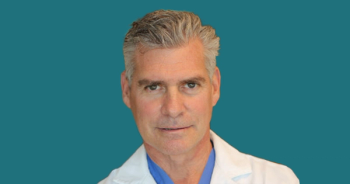
Jason Fontenot, PhD, on Addressing Unmet Needs in Neuropathic Pain and Prion Disease With Zinc Finger Genome Regulation
The chief scientific officer of Sangamo Therapeutics discussed data from 2 of the company’s programs that were presented at ASGCT’s 2023 conference.
“...The pharmaceutical industry has struggled to design small molecules that can achieve specificity against NaV1.7, versus the other closely related members of the NaV family. What's great about our platform is that, rather than targeting the protein where the similarities are very high, we can target at the genetic level and can design repressors that are exquisitely specific for NaV1.7. So we think that we're going to bypass that issue of specificity and be able to achieve repression of the ion channels and a significant decrease in pain. And one of the exciting things about the application is that it will be a one-and-done therapy.”
Neuropathic pain and prion disease are 2 examples of neurological indications which have high unmet need because of the dearth of treatment options currently available. One area of interest for potentially addressing this unmet need is zinc finger (ZF) genome regulation, which could provide the possibility of treating conditions such as these by regulating the expression of relevant genes.
Sangamo Therapeutics is presenting preclinical data regarding its work with ZF genome regulation at
In an interview with CGTLive™, Jason Fontenot, PhD, the chief scientific officer of Sangamo Therapeutics, discussed some of the key results from these programs that the company is presenting at the conference. He highlighted a mouse model study in the Nav1.7 program, in which the company’s epigenetic Nav1.7 repressor demonstrated a near-restoration of pain response to baseline. Fontenot also discussed the implications of the results both for patients with these conditions and for future research on treating other neurological diseases.
REFERENCE
1. Sangamo Therapeutics to present pre-clinical data from its genomic engineering platform at the 26th Annual Meeting of the American Society of Gene & Cell Therapy (ASGCT). News release. Sangamo Therapeutics, Inc. May 2, 2023. Accessed May 18, 2023. https://investor.sangamo.com/news-releases/news-release-details/sangamo-therapeutics-present-pre-clinical-data-its-genomic
Newsletter
Stay at the forefront of cutting-edge science with CGT—your direct line to expert insights, breakthrough data, and real-time coverage of the latest advancements in cell and gene therapy.











































